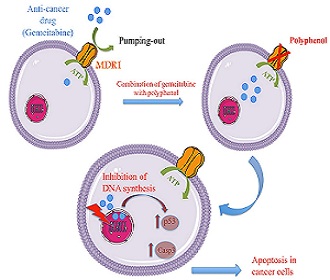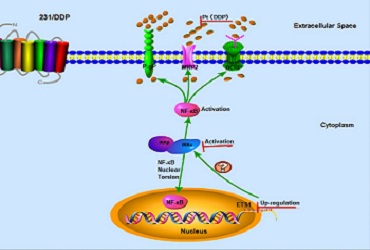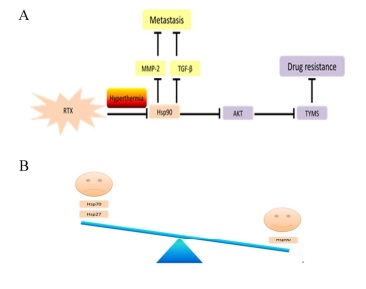Day 2 :
- Neuropharmacology and Psychopharmacology | Clinical Pharmacology and Receptor theory | Pharmacokinetics and Pharmacodynamics | Toxicology | Biochemical Pharmacology
Location: Amphi Theater

Chair
Maria Esperanza Avella Vargas
Military University of New Granada, Columbia

Co-Chair
Vasiliki Daikopoulou
R.G.C.C. S.A., Greece
Session Introduction
Mihaly Balogh
Semmelweis University, Hungary
Title: 14-O-methylmorphine-6-O-sulfate, a novel opioid agonist displays peripheral antinociception following local or systemic administration

Biography:
Mihály Balogh is a PhD student and Assistant Research Associate at Semmelweis University (Budapest, Hungary) since 2015. He has experience in investigating different in vivo models of neuropathic (e.g. diabetic neuropathy) and inflammatory pain (e.g. CFA induced inflammation). He studies the role of the peripheral opioid system in analgesia and also acquired practice in several in vitro (e.g., western blot) and isolated organ assays. Beside his scientific work, he is involved in teaching pharmacology and pharmacotherapy at Semmelweis University for English and Hungarian students.
Abstract:
Background & Aim: Convincing data supports the contribution of peripheral opioid receptors to total antinociception produced by systemic opioids. To achieve that, the physicochemical property of test drug should be accounted. Herein, we examined the antinociceptive effect of 14-O-methylmorphine-6-O-sulfate (14-O-MeM6SU), in the rat formalin test after systemic or local administration.
Method: Pain events were induced by intraplantar 2.5% formalin solution. Then, pain events were counted for 60 min, subdivided into 5 min periods. The 0-10 and 11-60 min time periods were named as phase I and phase II, respectively. Drugs were injected subcutaneously (s.c.) or intraplantarly (i.pl.), 15 or 5 min prior to i.pl. formalin injection, respectively. The impact of test compounds on both phases was studied. Additionally, righting reflex method was used to exclude the central effect of test compounds as its impact on sleeping time induced by inhaled isoflurane. Vehicle injections were used as control. One way ANOVA followed by Dunnett’s post hoc test and unpaired t-test was used for the determination of significances in case of formalin test and righting reflex method, respectively.
Results: S.c. injections of 14-O-MeM6SU or morphine inhibited the pain events evoked by formalin in both phases. Co-administered naloxone methiodide (NAL-M), a peripherally acting opioid antagonist reversed the antinociceptive effect of certain s.c. 14-O-MeM6SU doses but not of morphine (Fig. 1.). Morphine injected into ipsilateral or contralateral paws showed antinociception in both pain phases. Interestingly, 14-O-MeM6SU in certain doses produced antinociception only after ipsilateral injections. Finally, 14-O-MeM6SU contrary to morphine in s.c. antinociceptive doses significantly prolonged the sleeping time of inhaled isoflurane. These results indicate that the novel morphine analogue reported to have high efficacy earlier by us, have limited access to CNS and may have peripheral antinociception that is of potential clinical value.

Sarah Hassan
University of Strasbourg, France
Title: Polyphenols potentialize the cytotoxic activity of gemcitabine on pancreatic cancer cell line AsPC-1

Biography:
Sarah Hassan is a PhD student at University of Strasbourg. She holds Master’s degree in Pharmacology from Holy Spirit University of Kaslik and BS in Biochemistry from Lebanese University. Her research and thesis focused in anticancer drugs, enhancing their efficacy and reducing their toxicity potential by their combination with natural substances.
Abstract:
Pancreatic cancer is one of the most aggressive cancers, with only about 5% of patients surviving 5 years past the initial diagnosis. Gemcitabine monotherapy is the standard of treatment for patients with metastatic pancreatic cancer since several decades. Despite advances with current chemotherapy combinations, overall survival outcomes are still require novel therapeutic approaches. Here, we examined the efficacy of combined treatments of polyphenols and gemcitabine in human pancreatic cancer cells. For that purpose, the proapoptotic effects of gemcitabine were studied on the human pancreatic cell line AsPC-1 in presence or absence of several polyphenols, in order to evaluate if they latter are able to potentialize gemcitabine cytotoxicity. Our study aims to investigate the implication of MDR1 (multidrug transporter) in resistance to gemcitabine and if the studied polyphenol could target this drug efflux pump in AsPC-1 cells by flow cytometric analysis. We observed that 5 µM/ml gemcitabine in combination with 50 µM of selected polyphenol (catechin, quercetin, bergamottin, rhamnetin) was more effective than gemcitabine alone, as shown by increased in the percentage of dead cells up to 60%. In addition, our results indicate that the combination of gemcitabine and each polyphenol increased the expression levels of cleaved caspase-3 and the regulator of apoptosis p53. Moreover our results demonstrated that some polyphenols inhibit the efflux activity of MDR1. Our study in vitro suggests therefore that chemotherapy with gemcitabine might be significantly increased upon combination with specific polyphenol. In conclusion, polyphenols may be promising agents for novel combination therapy since they potentialize the cytotoxic activity of gemcitabine to eradicate pancreatic cancer and therefore the cellular resistance.

Yuzhu Zhang
Longhua Hospital Affiliated to Shanghai University of TCM, China
Title: ETS1 is associated with cisplatinum resistance though IKKα/NF-βB pathway in MDAMB-231

Biography:
He is studying his PhD of medicine at Shanghai University of Traditional Chinese Medicine.
His researches focus on key target genes of tumor prognosis, mechanisms of drug resistance and anti-cancer natural drugs.
Abstract:
MDA-MB-231/DDP had higher IC50 value of DDP, lower intracellular DDP concentration, lower apoptosis ratio than MDA-MB-231 cell line treated with DDP. Considering the intracellular DDP concentration difference, we tested drug-resistant membrane proteins (MRP2, P-gp and BCRP), which were remarkably increased in MDA-MB-231/DDP cells. Next, we found these increased membrane proteins were induced by the activation of NF-κB pathway in MDA-MB-231/DDP cells. Furthermore, ETS1, RPL6, RBBP8, BIRC2, PIK3A and RARS were six important genes for DDP-resistance based on PPI network and expression validation. However, it has been reported enforced over-expression of ETS1 induced IKKα mRNA and protein expression as well as IKKα promoter activity. Our results suggested the protein expression of ETS1 and IKKα were significantly up-regulated in MDA-MB-231/DDP cells. In addition, inhibition of ETS1 expression enhances chemo-sensitivity to DDP and reversed the activation of NF-κB pathway in MDA-MB-231/DDP cells, whether ETS-1 binds to the core IKKα promoter and strongly induces its activity. Now, our team is researching the corresponding sites between ETS1 and IKKαby dual-luciferase and chromatin immunoprecipitation technique (ChIP).

Yueqi Li
East China University of Science and Technology, China
Title: Hyperthermia adds to chemotherapy suppress peritoneal metastasis from colorectal cancer and enhance the chemotherapeutic sensitivity of raltitrexed by downregulating Hsp90

Biography:
Yueqi Li is pursuing her PhD since 2013 at East China University of Science and Technology. Her research work mainly focuses on “The administration of hyperthermic intraperitoneal chemotherapy”. She tries to explore the biochemical targets for the treatment of peritoneal carcinomatosis from colorectal cancer.
Abstract:
The poor prognosis of colorectal cancer (CRC) with peritoneal metastasis has not been improved up to now. Over the last few years, the therapy of hyperthermic intraperitoneal chemotherapy (HIPEC) following macroscopic surgery has been safely used in clinic. The aim of this study is to clarify the mechanism of peritoneal carcinomatosis suppression and the enhancement of chemotherapeutic sensitivity by the administration of HIPEC. Specifically, we build a peritoneal metastatic xenograft model to analyze the effect of HIPEC. Peritoneal injection was performed that CRC cells in phosphate-buffered saline solution were injected into the intraperitoneum of mice. Interestingly, we find the metastasis is efficiently inhibited and the number of metastatic nodules is remarkably reduced by HIPEC therapy compared with conventional chemotherapy. The Hsp90 is down-regulated by treating with hyperthermia after raltitrexed (RTX). In particular, the metastasis inhibition is indicated by the suppressing of TGF-β and MMP-2 and the chemo-sensitivity enhancement is shown by the attenuating of Akt activation and the expression of thymidylate synthase (TYMS). The overexpression of Hsp90 reverses the enhanced effects of the addition of hyperthermia. And the pharmacologic inhibition of Hsp90 enhances the effects. Together, our study provides a preclinical proof for better evaluation of combined hyperthermia and chemotherapy for peritoneal metastatic carcinoma treatment.

Masoumeh Gholami
Tarbiat Modares University, Iran
Title: Assessing the role of N-methyl-D-aspartate (NMDA) receptors and voltage dependent calcium channels (VDCCs) in synaptic plasticity induced by the combined application of tetanic stimulation and pentylenetetrazol in hippocampus area CA1 of sodium salicylate treated rats

Biography:
Masoumeh Gholami is a PhD student in Human Physiology at Tarbiat Modares University, Iran.
Abstract:
Statement of the Problem: Pentylenetetrazol (PTZ), a GABAA receptor antagonist, is one of the most extensively used epileptogenic agents. PTZ-induced seizures cause a number of seemingly permanent biological alterations in the hippocampus and other brain regions. These alterations may play an important role in synaptic plasticity. In vitro, a brief PTZ application (3 mM, 10 min) did not potentiate the slope of field excitatory postsynaptic potentials (fEPSPs) but induced along lasting enhancement of the amplitude of population spikes (PSs). Given the widespread use of salicylates (main metabolite and active component of aspirin) in clinical practice and to explore the relationship between tolerance to salicylate, long-term potentiation (LTP), and hippocampal activity, we studied whether tolerance to sodium salicylate would augment the plastic effect of a brief exposure to PTZ, and whether quantized priming via a natural stimulus pattern prior to PTZ exposure would change the lasting effects of PTZ.
Methodology & Theoretical Orientation: To assess whether priming would alter PTZ-induced plastic changes in the CA1 region, primed burst stimulation (PBs) sequences were applied on hippocampal slices taken from chronic sodium salicylate (NaSal) treated rats prior to the PTZ protocol (3 mM, 10 min). The underlying molecular mechanisms (NMDARs vs. VDCCs) of the long-term potentiation (LTP) induced by the 4PBs plus PTZ combined treatment in the NaSal group were also studied.
Findings: We noted priming with a natural pattern of stimulus trains prior to PTZ (4PBs-PTZ) can uncover the effects of chronic salicylate at the synaptic level that NMDA receptors activity and the VDCCs may involve in the phenomenon.
Conclusion & Significance: The elucidation of changes in synaptic plasticity following chronic salicylate could be useful in the clinical practice when aspirin is chronically prescribed in the medication program of some diseases such as cardiovascular diseases.
Sleman Kadan
Al-Qasemi Academic College, Israel
Title: Gundelia tournefortii anti-diabetic efficacy: Chemical composition and GLUT4 translocation

Biography:
Sleman Kedan is a PhD student at Al-Qasemi Research Center, Al-Qasemi Academic College, and Casali Institute for Applied Chemistry, Hebrew University of Jerusalem, Israel where he completed his MSc in Chemistry in 2010. His PhD thesis entitled “Novel anti-diabetic natural drug candidates: isolation, identification and characterization of the chemical structures and biomolecular mechanisms”. He has published four refereed papers.
Abstract:
In the present in vitro study, we tested the chemical composition, cytotoxicity and anti-diabetic activity of two wild artichoke-like vegetable, Gundelia tournefortii, and distinct extracts: methanol and hexane. GC/MS phytochemical analysis of Gundelia tournefortii methanol and hexane extracts revealed 44 compounds reported here for the first time in Gundelia tournefortii. Out of the 50 detected compounds only stigmasterol was present in both extracts. The efficacy of Gundelia tournefortii extracts in enhancing glucose transporter-4 (GLUT4) translocation (fig. 1) to the plasma membrane (PM) was tested in L6 muscle cells stably expressing myc-tagged GLUT4 (L6-GLUT4myc) using cell-ELISA test. Results obtained here indicate that methanol and hexane extracts were safe up to 250 µg/ml as measured with MTT and the LDH leakage assays. The methanol extract was the most efficient in GLUT4 translocation enhancement. It increased GLUT4 translocation at 63 µg/ml by 1.5 and 2 folds relative to the control in the absence and presence of insulin, respectively. These findings indicate that Gundelia tournefortii possesses anti-diabetic activity in part by enhancing GLUT4 translocation to the PM in skeletal muscle.

Biography:
Fadhila Helnisa has completed her Bachelor degree from Andalas University, Indonesia and has successfully fulfilled all the academic requirements of Indonesian Pharmacist Profession. Now, she is studying Master of Toxicology at University of Birmingham.
Abstract:
A study on clinical pharmacokinetics aspect of drugs in patients with hypertension at the Internal Medicine department of Hospital Padangpanjang (Indonesia) has been conducted. The aims of the research were to determine the accuracy of antihypertensive medications to achieve targeted blood pressure and to assess the dosage regimen based on liver and/or kidney functions, also drug interactions. The study was performed from December 2013 to February 2014. This is observational prospective study with 49 patients who met the inclusion and exclusion criteria. Data was analyzed descriptively. Results showed that 60.42% antihypertensive medications were effective but 39.58% not effective to reach the targeted blood pressure. There were three cases in appropriate dose regimen covering one case digoxin, one case furosemide and one case captopril. From the cases, doses exceed individual dose included digoxin and captopril. There were 14 cases of pharmacokinetic interactions and two cases of pharmacodynamics interactions. Interaction between amlodipine and diltiazem (7 patients, 14.58%) influenced the blood pressure control in patient. These are pharmacokinetic interaction because diltiazem decreases metabolism of amlodipine by inhibiting enzyme CYP 3A3/4.
Tie Teck Kim
Changi General Hospital, Singapore
Title: Consider Ertapenem as culprit for central nervous system related adverse effects
Biography:
Tie Teck Kim has completed his BPharm from Curtin University of Technology in Western Australia in 2007 and his Master’s degree in Infectious Diseases from the University of Western Australia in 2014. He is currently practicing as an Antimicrobial Stewardship Pharmacist at Changi General Hospital.
Abstract:
Statement of the Problem: Ertapenem use has been associated with central nervous system (CNS) related adverse effects (AEs) which include delirium, hallucinations, altered mental status (AMS), stroke like symptoms and seizures. We describe baseline characteristics and clinical features in four patients who developed CNS related AEs while receiving ertapenem during a period of six consecutive months in 2016.
Methodology & Theoretical Orientation: We retrospectively reviewed patients on ertapenem and identified the ones who developed CNS related AEs attributed to ertapenem use from April till October 2016.
Findings: Patient one (no renal impairment) was prescribed ertapenem for complicated intra- abdominal infection. He was noted to be drowsy on day 12 of ertapenem. Over the next 1-2 days, he developed auditory hallucinations, jerky limb movements and fluctuating level of consciousness. He was switched to aztreonam. Patient two (no renal impairment) developed confusion and hallucinations (visual, auditory and tactile) on day 25 of ertapenem which was being administered for tubo-ovarian abscess. Ertapenem was substituted to meropenem. Patient three (known end stage renal failure) developed seizure while on day 28 of ertapenem which was prescribed for bilateral renal abscess. No further episode of seizure was observed after ertapenem was switched to piperacillin/tazobactam. Patient four (known chronic kidney disease) was receiving ertapenem for complicated urinary tract infection. He was noted to be delirious on day nine of ertapenem. Patient was switched to meropenem. In these patients, average age was 65 years. Male to female ratio was 1:1. None of the patients had previous history of seizure or CNS disorders. Two patients had normal renal functions. Toxic & metabolic causes were excluded. Computed tomography (CT) of brain was normal in all cases. Dose was renally adjusted in two patients. Ertapenem therapeutic drug monitoring (TDM) was not locally available. Symptom improvement was noted 3-4 days after ertapenem discontinuation in all patients.
Conclusion & Significance: Patients who develop these AEs can deteriorate rather unexpectedly which leads to extensive investigations and increase in health care cost. The cost can be minimized if physicians are acquainted to consider ertapenem as an offender agent. However appropriate workup to eliminate alternate etiology also needs to be considered at the same time as dictated by the clinical scenario. Ertapenem TDM might give information on CNS AEs in future studies.





